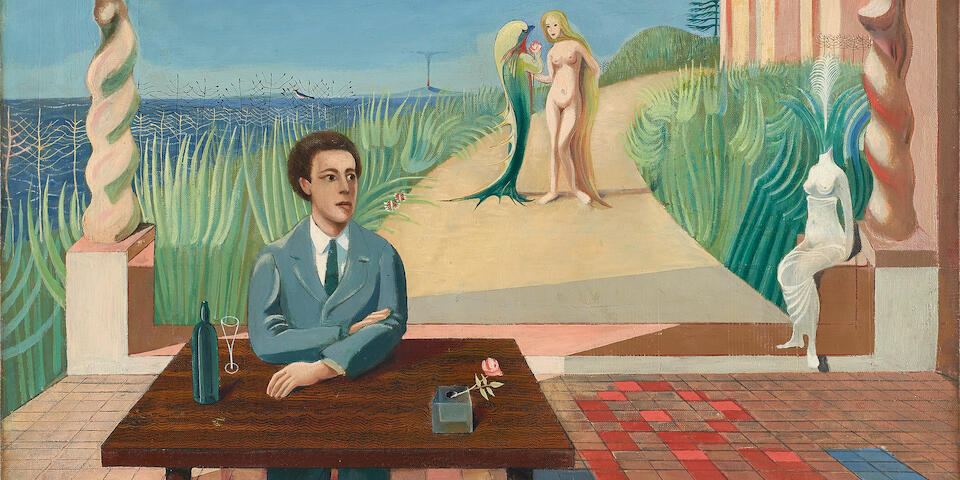La Révolution Surréaliste

Paris – Portrait d'André Breton by Max Ernst (1891-1976) and his then-wife Marie-Berthe Aurenche (1906-1960), leads Bonhams La Révolution Surréaliste sale on 29 March in Paris. The rare joint work by the pair has an estimate of €400,000 - 600,000. Following the outstanding results for Bonhams' latest sales dedicated to Surrealism in 2021 and 2022 in London, Bonhams is delighted to present the third iteration of the auction, La Révolution Surréaliste, in the birthplace of the movement: Paris.
Emilie Millon, Bonhams Head of Impressionist & Modern Art in Paris, commented: "La Révolution surréaliste was a publication edited by the Surrealists in Paris between 1924 and 1929. In the early issues, it contained, among other things, dream stories by Breton, Raymond Queneau and Michel Leiris. Following successes with female Surrealist art and timed to coincide with the Surrealist Women exhibition at the Musée de Montmartre, we are excited to present La Révolution Surréaliste in Paris, the birthplace of this storied movement.
"We are also delighted to be offer a rare Portrait d'André Breton by Max Ernst and Marie-Berthe Aurenche. The women of the Surrealist movement long received more recognition for their role as muses than as artists in their own right. Max Ernst in particular developed a number of passionate relationships with talented and creative women – including Leonora Carrington, and Dorothea Tanning – and yet perhaps the most overlooked has been Marie-Berthe Aurenche. The story of this work offers a glimpse into how women have often been written out of the movement, and how they have only recently found their way back in."
Max Ernst met painter Marie-Berthe Aurenche in late 1927 and they married almost immediately. Photographed by Man Ray in 1928, they mixed with the wider group of Surrealists, including the leading figure of the group, André Breton. Breton and Ernst were already firm friends, but Breton disliked Marie-Berthe – allegedly telling Ernst that she acted like his nanny. The couple's joint portrait of Breton blends both their styles, yet the authorship of the work was originally misattributed. When the portrait was shown at the 1933 exhibition at the Galerie Pierre Colle, Marie-Berthe was named in the catalogue as the sole artist. Breton himself surprisingly attributed the work only to her in the May 1933 issue of his periodical Le surréalisme au service de la revolution, but by 1960 altered this to credit both her and Ernst.
Just five years later, Marie-Berthe was to be written out of the history of the work altogether – in his 1965 publication Érotique du surrealisme, Robert Benayoun annotated an illustration of Portrait d'André Breton as such: 'according to André Breton this painting was actually painted by Max Ernst himself'. Aurenche was removed from the creation of the work again in the catalogue for its 2004 exhibition in La Coruña, where it is attributed solely to her husband.
Ernst and Aurenche became estranged and divorced in 1936. She went on to become the mistress of the painter Chaïm Soutine in 1940. Marie-Berthe suffered from delusions, but not much else is known about her. After her death in 1960 she was buried in the same grave as Soutine.
Writing in Bonhams Magazine, Mark Hudson, states: "The anomalous calm of the painting's composition and atmosphere feel, then, very much Aurenche's creation. Rather than dominating the proceedings with his monstrous ego, Breton sits calmly at a table in the painting's middle ground, on a tiled terrace before a sun-drenched Mediterranean headland. Surreal beings, including a naked blonde woman and a bird-fish figure, both believed to be by Ernst, confer on a path far behind Breton, while a headless woman sits on a pediment beside one of two twisting columns. Yet these presences aren't ominous, as we'd expect in a painting entirely by Ernst: the headless figure feels more statue than cadaver."
Other highlights of the sale include:
• Léon Arthur Tutundjian (1906-1968), Masque jaune, 1930. Estimate : €120,000-180,000. The artist emigrated in 1923 to Paris where he befriended his fellow Armenian painter Ervand Kochar, who introduced him to Miró, Picasso, Mondrian and Jacques Villon. The present work dates from Tutundjian's Surrealist period, when, inspired by the works of René Magritte and Salvador Dalí, the artist developed his own visual metaphors often imbued with subtle Indian and Persian influences. Although never becoming a formal member of the Surrealist group, the artist was closely associated with André Breton and exhibited with the Surrealists throughout the 1940s and 1950s.
• Jane Graverol (1905-1984), Le Trait de Lumière, painted in 1959. Estimate : €35,000-55,000.
• Salvador Dalí (1904-1989), Rosa e morte floriscens, executed in 1967. Estimate: €40,000-60,000.
• Salvador Dalí (1904-1989), Study for the Marsupial Centurion, executed in 1941. Estimate: €15,000-20,000.
• Man Ray (1890-1976), La bonne route, oil on canvas laid on Masonite painted in 1953. From the collection of his celebrated model, Jacqueline Barsotti-Goddard, collection. Estimate: €8,000-12,000.
